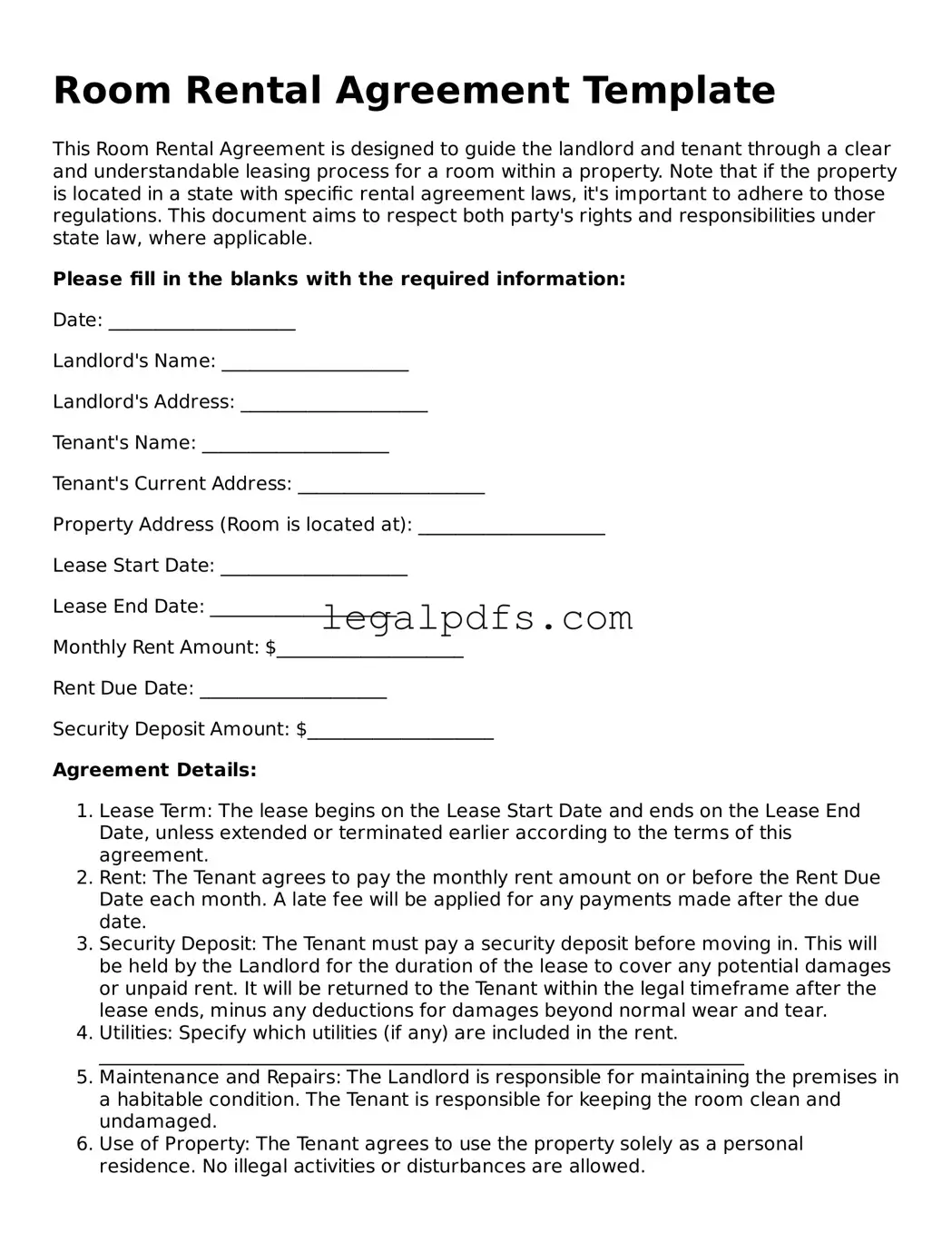Room Rental Agreement Template
This Room Rental Agreement is designed to guide the landlord and tenant through a clear and understandable leasing process for a room within a property. Note that if the property is located in a state with specific rental agreement laws, it's important to adhere to those regulations. This document aims to respect both party's rights and responsibilities under state law, where applicable.
Please fill in the blanks with the required information:
Date: ____________________
Landlord's Name: ____________________
Landlord's Address: ____________________
Tenant's Name: ____________________
Tenant's Current Address: ____________________
Property Address (Room is located at): ____________________
Lease Start Date: ____________________
Lease End Date: ____________________
Monthly Rent Amount: $____________________
Rent Due Date: ____________________
Security Deposit Amount: $____________________
Agreement Details:
- Lease Term: The lease begins on the Lease Start Date and ends on the Lease End Date, unless extended or terminated earlier according to the terms of this agreement.
- Rent: The Tenant agrees to pay the monthly rent amount on or before the Rent Due Date each month. A late fee will be applied for any payments made after the due date.
- Security Deposit: The Tenant must pay a security deposit before moving in. This will be held by the Landlord for the duration of the lease to cover any potential damages or unpaid rent. It will be returned to the Tenant within the legal timeframe after the lease ends, minus any deductions for damages beyond normal wear and tear.
- Utilities: Specify which utilities (if any) are included in the rent. _____________________________________________________________________
- Maintenance and Repairs: The Landlord is responsible for maintaining the premises in a habitable condition. The Tenant is responsible for keeping the room clean and undamaged.
- Use of Property: The Tenant agrees to use the property solely as a personal residence. No illegal activities or disturbances are allowed.
- Guest Policy: Overnight guests are permitted for a maximum of _____ consecutive nights and not more than _____ times in a month without prior approval from the Landlord.
- Termination: Either party may terminate the lease with written notice at least _____ days before the intended termination date. Specific conditions for termination without penalty should be listed here. _____________________________________________________________________
This agreement is governed by the laws of the state in which the property is located. Any disputes arising from this agreement will be resolved through arbitration or in the court of law within the same jurisdiction.
Landlord's Signature: ____________________ Date: ____________________
Tenant's Signature: ____________________ Date: ____________________
This template is provided as a general guideline. It's crucial to consult with a legal professional to ensure that this agreement meets all state-specific requirements and adequately protects your rights and interests.
